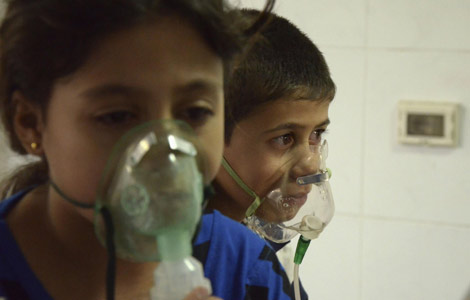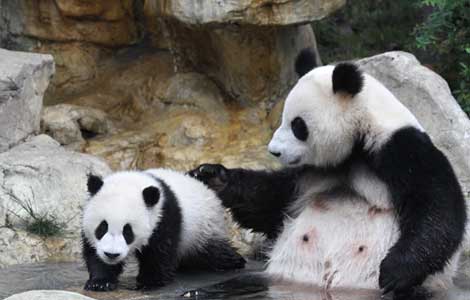
|
Manufacturers of underwear accessories are being forced to become more innovative and creative to compete. Provided to China Daily |
Competition so fierce that manufacturers of accessories under constant pressure to improve
Modern women set high standards when choosing their underwear. They demand garments that are chic, comfortable and safe. Lace and other special fabrics are not the only things that make a bra look special. Tiny items hidden away in the garment can make it fit well and look so much better.
Manufacturers of underwear accessories - hooks, buckles, pendants, straps and bra cups - are being forced to become more innovative and creative to compete in the crowded, messy and immature accessories market.
Yongjia Underwear Accessories Co Ltd, in Guangdong province, is striving to improve the quality of its products, adjusting its industrial chain and using more green materials to meet the challenges of a volatile business.
"We are trying to do something different from other manufacturers, who just make cheap accessories," says Zeng Linhong, deputy general manager of Yongjia. "As customers realize the importance of safety and comfort even for a small hook, we have to adapt quickly to keep our products up to scratch."
Yongjia, established in 1998, has developed nearly 100 categories of products, and each category has about 5,000 different styles. However, the company still has to work with local or lower-end underwear brands rather than top international companies.
"Branded products are always good quality, and it's difficult for us to meet international standards," Zeng says.
In fact, after 2009, more businesses became involved in the accessories business as they saw the potential of the industry. But most manufacturers compete by the simple method of reducing prices. As well, there is no industrial standard regulating this expanding sector, Zeng says.
To gain share of the market, Yongjia has used several strategies. As well as producing environmentally-friendly, high-quality garments, it has also cut its profit margin to an average of less than 20 percent of the price.
"The price for some of our high-end accessories has been lowered due to the fierce competition," Zeng says.
Ke Fensheng, sales manager of the 39-year-old Guangdong Dhoma Industry Ltd Co, a maker of garment accessories such as sewing threads and polyester, agrees with Zeng. "The underwear accessories business in China is too scattered and lots of people have become involved," he says.
The most significant progress for Ke's Dhoma is that last year it began exporting its products to Malaysia, Russia and other countries.
"Buyers are looking for softer and greener sewing threads for fresh styles, and we are researching and developing new colors and technologies," says Ke.
In the past, the company worked with domestic producers, and had deals with nearly 80 underwear manufacturers and hundreds of garment makers. After improving its productivity, Dhoma decided to move into exports to expand its business outside the congested Chinese market. Annel New Materials (Shanghai) Co Ltd, which is involved in the polyurethane chemical industry, produces 10 types of adhesives.
"We established the company in 2006 when we saw the revolution in the underwear industry, which changed from using stitching in joins to a seamless method," says Tang Heng, the company's technical director.
The company mainly supplies adhesive products for OEM (original equipment manufacturers) factories. However, as more international brands transferred to cheaper Southeast Asian manufacturers, and spending power in developed countries declined due to the economic crisis, Tang's company began to experience a slowdown after doubling its annual sales in each of the five years to 2011.
"In 2012 we began to ship to Southeast Asian countries, and now we export 1,000 tons a year, which accounts for 10 to 20 percent of our total sales."
Although the company is maintaining annual sales growth at 30 percent, it is under pressure to be innovative as the industry demands higher and higher quality.
"We have to keep a close eye on the industry as fashion cycles come and go quickly," Tang says. "Our profit margin has fallen because more factories are coming into the industry. So, the only way we can handle the situation is to control costs while still developing new technologies and products."
yaojing@chinadaily.com.cn
(China Daily Africa Weekly 08/23/2013 page15)








